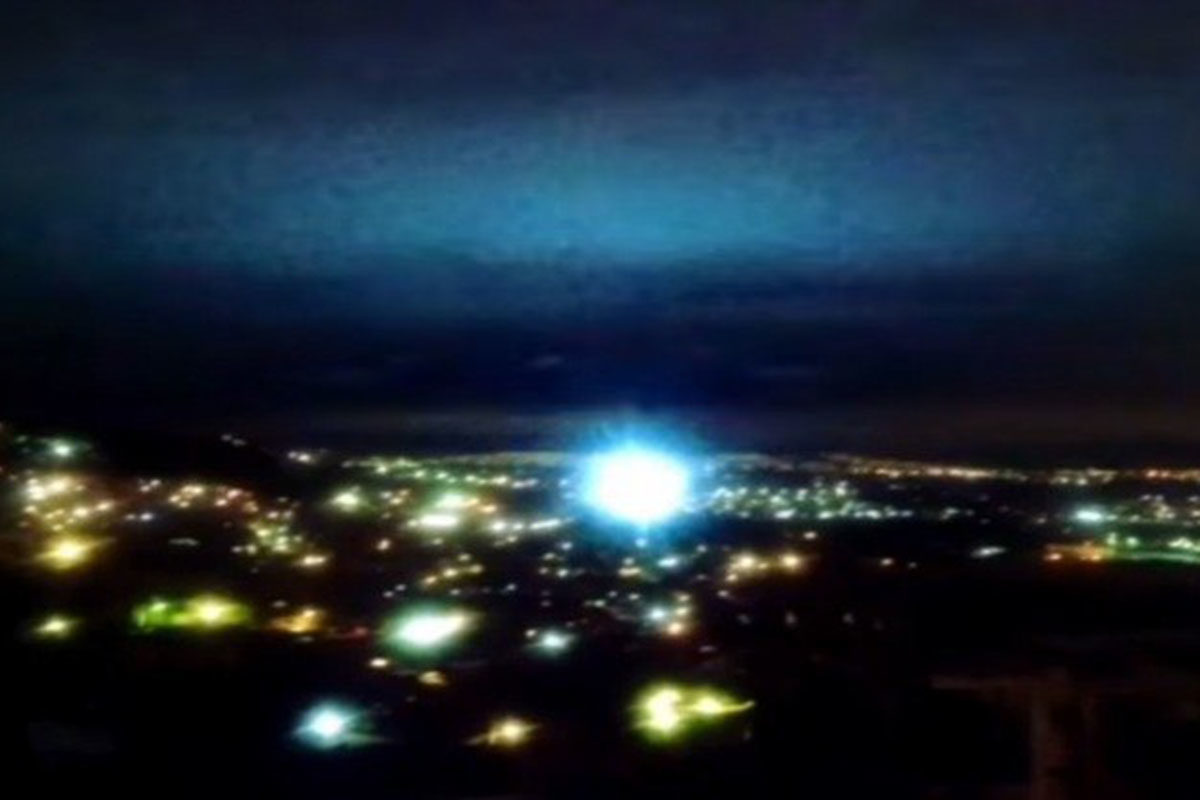
© IMPACTO El Diario/YouTubeWhat makes skies over quakes glow?
After an 8.1-magnitude earthquake struck off the southern coast of Mexico on 7 September, videos of fuzzy green smears in the night sky went viral online.
Earthquake lights are a phenomenon so unusual that they border on myth. The first known reports of them are from 89 BC, with spotty descriptions over the centuries.
Recently, they've been seen during foreshocks and the main earthquake in L'Aquila, Italy, in 2009, and as flashes of blue lightning over Wellington, New Zealand, in 2016.
"These phenomena are well-documented because of so many security cameras running day and night now," says
Friedemann Freund at NASA's Ames Research Center.
Glowing globes, and other phenomenaEarthquake lights are electric discharges that come out of the ground and can rise up to 200 metres in the air, says Freund. Lights are sometimes observed in the days and hours leading up to an earthquake, and at other times during or after it. But how they work is still mysterious.
Part of the challenge in getting to the bottom of this is that earthquake lights have been described in so many ways: as glowing globes, flickering flames from the ground, or even branching lightning that sparks from Earth instead of the sky.
And in many instances, they could be explained by other phenomena, such as volcanic flames from fissures, streaking fireball meteors or
auroras.
"It's a little bit difficult to ferret out what is a real one and what is not," says
Troy Shinbrot at Rutgers University in New Jersey. But what's happening at those times when nothing else makes sense?
Electric lightsOne idea is that when igneous or metamorphic rocks are under stress, the molecular bonds break and release ionised oxygen that travels through the rock. "The faster we stretch the rocks, the more of these positive-charge carriers are released," says Freund.
In this line of thinking, some of these ions can create charged layers at or just below the surface, generating localised electric fields. The strongest fields cause coronal discharges - brief bursts of visible light.
In some conditions, defects in the mineral structure mean that rocks can even behave as semiconductors that explode as a flash of light when hit by seismic waves. This state lasts only for fractions of a second, says Freund, and then charged particles "can break through Earth's surface and discharge as an electric discharge into the air".
Crushed quartzAnother possibility is that earthquake lights are a manifestation of "triboluminescence", which refers to light released when chemical bonds are broken through rubbing, crushing or scratching. This effect has been demonstrated under certain circumstances by tumbling mixed grains in small-scale laboratory experiments.
Similarly, squeezing quartz pushes surface ions out of position, generating a tiny electric current. It's plausible that the same processes could create earthquake lights when faults move and crush rocks together, given that quartz is one of the most common minerals in Earth's crust.
No matter the idea, it would be difficult to
test in the real world. "However you do the experiment, there's going to be an inevitable big gap between how large an experiment can be - a metre, 2 metres - and tens of kilometres which occur in earthquakes," says Shinbrot.
But one thing is clear - with more viral footage emerging every few months, scientists will have plenty of data to sift through.
Comment: Videos of the mysterious lights in the sky following the 8.1 magnitude earthquake (the strongest for a century) which struck Mexico last week have been shared widely across social media. On the same day, images taken by the GOES-16 satellite showed countless lightning storms crackling within Hurricane Irma as the monster storm churned its way towards Florida. Last week also saw the sun unleash a monster X9.3 solar flare, the strongest in a decade & the 4th X-class within a week.
In the chapter, Earth 'opening up', in Earth Changes and the Human-Cosmic Connection, Pierre Lescaudron discusses various factors pertaining to earthquakes and volcanic eruptions, including the Earth's minute slowdown exerting mechanical stress on the crust and electromagnetism.